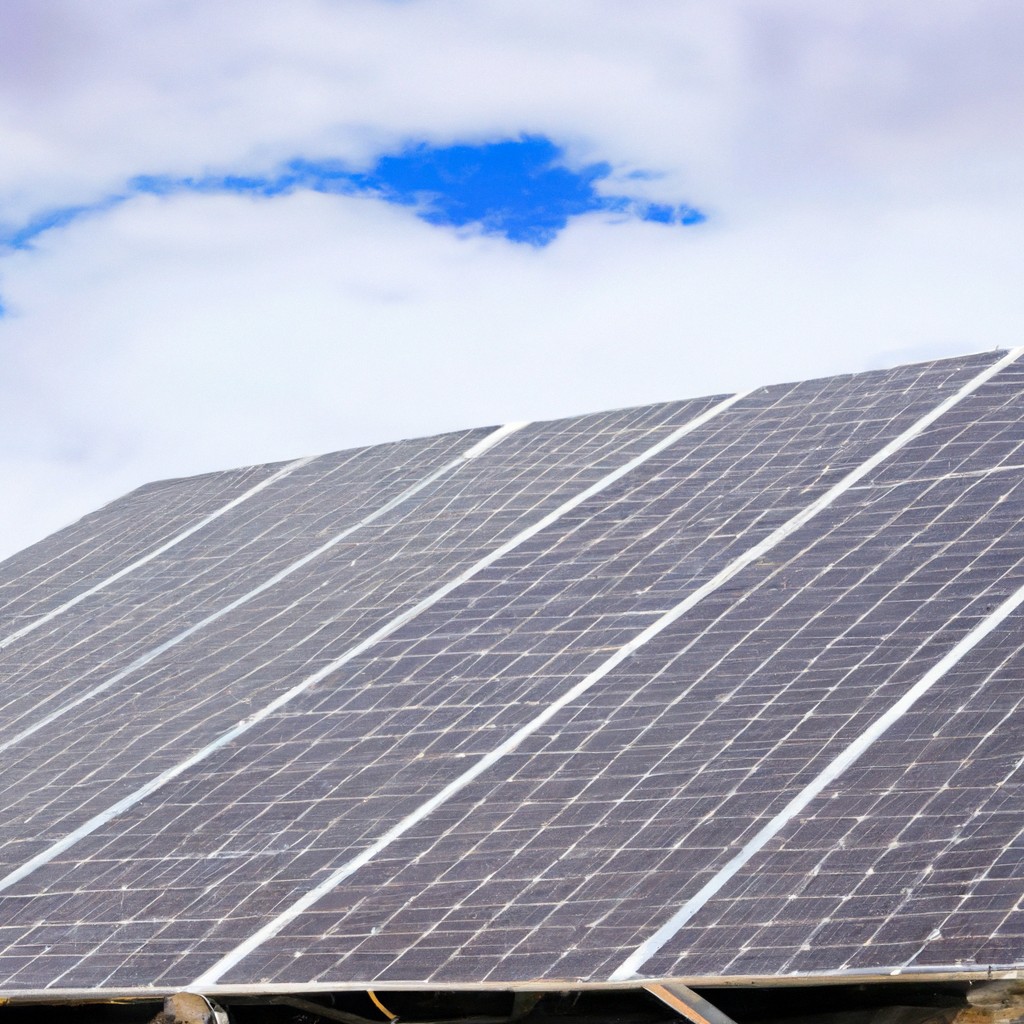Harness the sun’s energy efficiently by learning the practical steps for using solar panels at home.
Key takeaways:
- Evaluate home’s energy efficiency before investing in solar panels.
- Determine the solar potential of your home based on sunlight exposure.
- Assess your energy consumption and future needs to determine the size of your solar system.
- Understand the different types of solar panels and choose the right one for your needs.
- Choose a reputable solar installer with experience and good customer reviews.
Evaluate Your Home’s Energy Efficiency

Before going full throttle with solar panels, take a beat to gauge your home’s energy thriftiness. It’s like ensuring your bucket isn’t leaky before you fill it up. Simply put, a more energy-efficient home will need fewer solar panels, which can mean a more friendly price tag.
To start, conduct an energy audit. This is a thorough check-up of your home’s energy use. An auditor can pinpoint where your abode might be wasting energy. Think old appliances guzzling electricity or drafty windows playing hot and cold.
Next step, embrace LED lights and consider energy-efficient appliances. They’re like the marathon runners of gadgets, going the distance on less energy.
Also, have a gander at your insulation. Keeping your home cozy in winter and cool in summer without overworking your HVAC system can positively impact your solar needs.
These moves can trim down the number of panels you’ll need, and that’s good news for your wallet and the planet. Keep it lean and mean on energy, and you’ll be set for solar success.
Determine the Solar Potential of Your Home
Sunshine is your new best friend; the more it visits, the merrier your solar setup will be. Start by observing how much sunlight hits your roof throughout the day. Trees, neighboring buildings, and even your own chimney can cast shadows that may impact efficiency.
Your roof’s angle is also a VIP guest at the solar party. A roof with a slope that faces south typically soaks up the maximum amount of rays in the Northern Hemisphere. But don’t fret if your roof doesn’t fit this description. Panels can be mounted at an angle to catch those precious sunbeams.
Now, let’s talk geography. The amount of solar energy you can harvest isn’t the same in sunny California as it is in often-overcast Seattle. Check out online resources like the National Renewable Energy Laboratory’s maps to get the scoop on your area’s solar potential.
Lastly, your local weather patterns aren’t just small talk. Frequent cloudy or stormy skies could mean your panels won’t be basking in sunbeams quite as often, which is crucial when deciding if solar is a bright idea for your home.
Assess Your Solar Panel Needs
Kick off by scrutinizing your energy bills. Look for kilowatt-hours (kWh) — your monthly energy consumption stat. This figure is your starting block to size up the solar system you’ll need.
Contemplate your energy goals. Are you aiming to offset just a portion of your current energy usage or striving for a full transition to solar?
Examine future changes. Will your energy needs increase due to, say, an electric vehicle or a larger family? Planning ahead avoids the headache of retrofits.
Remember, local climate factors also play a crucial role. Locations with fewer sunny days require more panels to achieve the same output as those basking in sunlight galore.
Lastly, inspect your roof’s surface area. More space can accommodate more panels, which direct translation is — more power. But, no need to fret if your roof is more on the petite side. Solar technology advancements have significantly upped panel efficiency.
Understand the Types of Solar Panels
Sun catchers come in different flavors, and picking the right one is key to a sweet energy harvest. First up is the photovoltaic (PV) panel, the most common type you’ll see twinkling on rooftops. These are the workhorses of residential energy production, transforming sunlight directly into electricity. They’re like your dependable friend who always shows up on move day—reliable and efficient.
Next on the list is thin-film solar. These panels, svelte and sleek, are the runway models of the solar panel world. They can hug just about any surface, making them a go-to for peculiar spaces and they don’t break the bank. Think of thin-film as the flexible yoga instructor who can bend to fit any role.
And then there’s the less common but mighty concentrator photovoltaics (CPV), akin to the magnifying glass you might have used as a kid to burn your name into a piece of wood. CPVs use lenses to concentrate sunlight onto tiny, high-efficiency cells. They’re like the brainiacs who solve complex equations in their heads—high-performing but not as widespread.
Understanding these options is like knowing your coffee beans before brewing that perfect cup. Each type has its strengths and is suited for different scenarios—just like how some beans are better for espresso while others shine in a French press. And just like coffee, it all comes down to personal preference and context. Well, that and a dose of sunlight!
Choose a Reputable Solar Installer
Selecting the right professional to install your solar panels can be the difference between a headache and a hassle-free experience. Look for certified installers with solid track records, ensuring your investment pays off both financially and environmentally. Opt for companies that are transparent about their credentials and past installations. This way, you can gauge their expertise and reliability.
Request multiple quotes to compare pricing and services. However, don’t let cost be the sole deciding factor; sometimes, a cheaper option can cost more in the long run if the work isn’t up to par. Prioritize quality and warranty terms.
Good installers also guide you through available incentives, rebates, and financing options. A detail-oriented installer will handle necessary permits and inspections, smoothing out the process. Finally, check reviews and ask for customer references to hear firsthand about their experiences. Happy customers are the best sign of a job well done.




